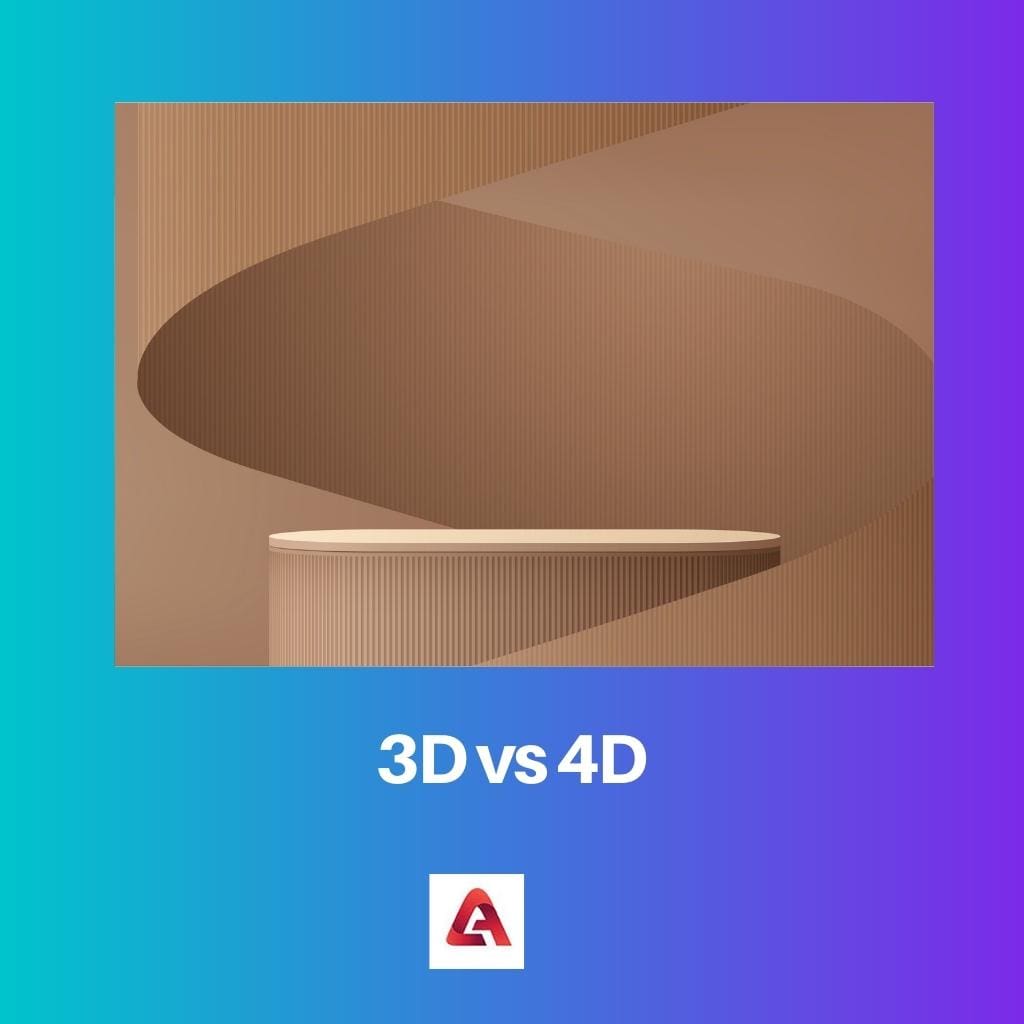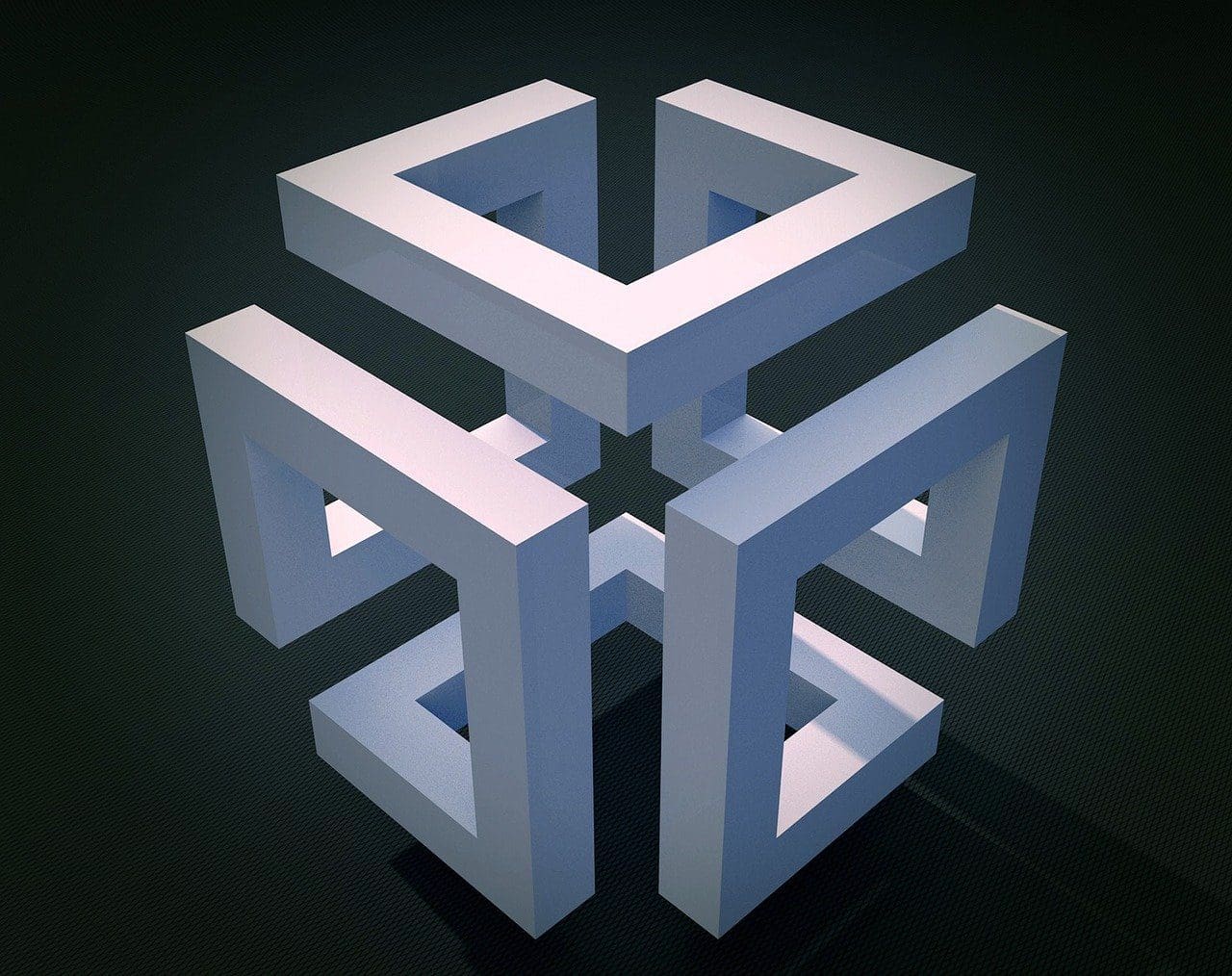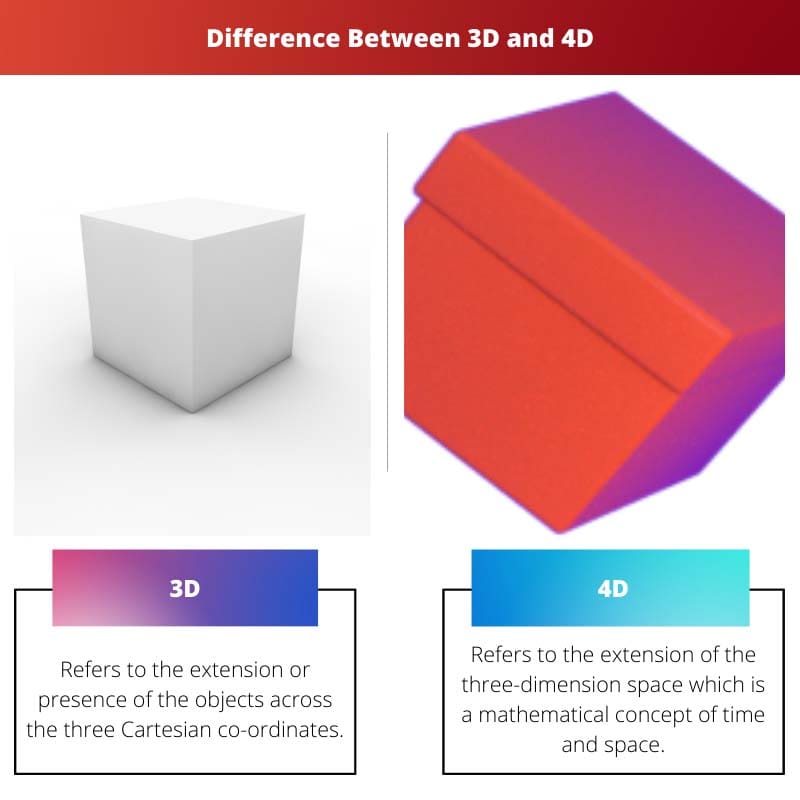Every object occupies some space. But the dimension varies.
Dimension is an attribute for an object that defines the target object’s position. It tells the extension or presence of the target in a particular direction.
For example, a point has no dimension.
A line occupies only one dimension. It extends in one direction only.
A simple plane occupies two dimensions. For instance, a plane surface can extend in two Cartesian coordinates.
Every object in this world occupies three dimensions, i.e. length, width and depth.
Key Takeaways
- 3D refers to a three-dimensional object or image with height, width, and depth.
- 4D adds the element of time to the equation, allowing for a more dynamic and interactive experience.
- 3D is used in movies, gaming, and architecture, while 4D is used in theme park rides and other immersive experiences.
3D vs 4D
The difference between the three and four dimensions is that three can be easily perceived, unlike the fourth, which is difficult to feel and observe.

Three dimensions (3D) is all about the presence (extension) of the object of the target in the x, y and z-axis. We visualize our world and the object around us in three dimensions (3D).
It has become possible for us to visualize the three dimensions with the help of data collected and recognized by our sense organs. Knowledge of the three dimensions can be traced back to the seventeenth century when it started sprouting with the invention of the Cartesian coordinate system.
Whatever we experience comes under the space of three dimensions. But researchers have long assumed another dimension besides the third dimension, which they termed the fourth dimension.
The debate on the fourth dimension started when Jean Le Rond D’Alembert mentioned this term in the late eighteenth century. The fourth dimension refers to time which cannot be seen or felt.
Comparison Table
| Parameter of Comparison | Three Dimensions | Four Dimensions |
|---|---|---|
| Definition | Refers to the extension or presence of the objects across the three Cartesian coordinates | Refers to the extension of the three-dimension space, a mathematical concept of time and space. |
| Parameters | Length, breadth(width) and height | Length, height, width(breadth) and time |
| Visualization | Can be felt and experienced | Cannot be perceived easily |
| Origin | Early seventeenth century | Late eighteenth century |
| Proof of Existence | Three-dimensional space has been proved both in theory and in reality. | The fourth dimension is a concept not demonstrated in actual reality. |
| Mathematical Parameters | X, Y and Z axis | It consists of four dimensions in which time has been added as a virtual axis. |
| Example | Cuboid | Tesseract |
What is Three-Dimensional Space?
Three-dimensional (3D) space refers to the existence of an object in the three spatial axes. In other terms, it is the number of independent parameters needed to define the location of a particular object in space.
Knowledge of three-dimensional space had been conceptualized at a very early period. Every object around us is three-dimensional.
All these objects possess length, breadth (width) and height. The world we live in is visualized in three dimensions.
The degree of this visualization depends on the individual’s ability to perceive these dimensions with the aid of one’s senses.
The three Cartesian coordinates define the representation of three-dimensional space in mathematics. i.e. x-, y- and z-axis. All three axes are mandatory for defining its position or existence.
For example, a square plane can be defined by either of the two axes in the coordinate system, i.e. x-y plane, y-z plane or z-x plane, whereas all three axes are necessary for validating the existence of a cube. The volume of the cube can be found only by the data extracted from all three axes.

What is Four-Dimensional Space?
Four-dimensional (4D) space is something unique. It still exists as an abstract which gained more attention when Einstein published his works on the theory of relativity.
The fourth dimension is a modified version of three-dimensional space with the addition of time as the fourth imaginary axis. As per Einstein’s theory, every object falls under a specific space and time frame.
Time is not an independent quantity; rather, it is related to space.
This means that any alteration in the space would also have a profound effect on time. Under this assumption, the working of the universe differs completely when time is assumed to be a dimensional parameter.
Here the effect of past, present and future get nullified as the space changes relative to time.
Tesseract is a good example of understanding the fourth dimension. Tesseract is the presence of a cube in the fourth dimension.
When a cube is perceived to be extruded in a direction perpendicular to the existing three-dimension, the tesseract is formed. The below gif would give an idea of Tesseract from a three-dimensional perspective.
We feel difficult to perceive as we can sense only from a three-dimensional perspective. Scientists are trying to demonstrate this abstract in reality, which could take some time to materialise.

Main Difference Between Third and Fourth-Dimensional Space
- Three-dimensional space specifies a particular location concerning three coordinates (axes). The fourth dimension is conceptual, where time is added to the three-dimensional space, which acts as an additional virtual axis.
- The three-dimensional space consists of length, width(breadth) and height. Time is added as the fourth dimension.
- We live in a world of three dimensions. The concept of four dimensions was formulated from Einstein’s general theory of relativity, which remains abstract.
- The geometrical example of three-dimensional space can be a cuboid, cube, sphere etc. Tesseract is a classic example of fourth-dimensional space.
- A practical example can be additive manufacturing. The addition of material to its perpendicular base results in 3D printing.
When this 3d print starts reacting to environmental changes, it can be termed 4D printing.



